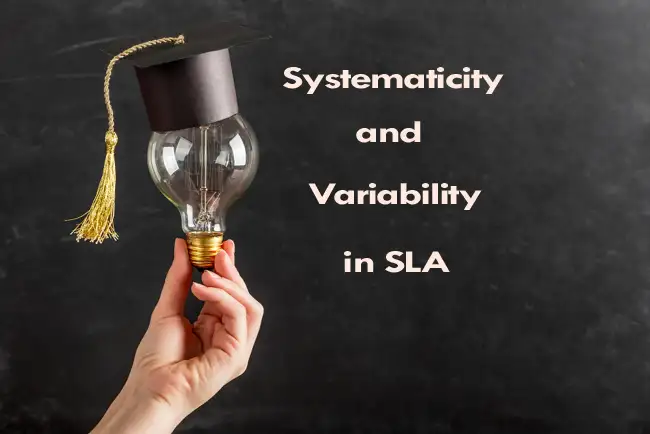Systematicity in language learning
A substantial part of the SLA research community has concentrated on documenting and trying to understand the discovery that language learning is highly systematic. A defining moment for the field was in the late 70s / early 80s when it became evident that L2 learners follow a fairly rigid developmental route, in the same way as children learning their L1 do, and not dissimilar in many respects from the L1 route. Moreover, this developmental route, crudely represented as a series of interlocking linguistic systems (or interlanguages, sometimes bore little resemblance to either the L1 of the learner, or the L2 being learnt.
Interlanguage in systematicity
According to Mitchell and Myles (2004), in the process of interlanguage, “… this kind of data has commonly been interpreted to show that, at least as far as key parts of the second language grammar are concerned, learners’ development follows a common ‘route’, even if the speed or ‘rate’ at which learners actually travel along this common route may be very different” (p. 16).
Variabilists such as Tarone (1983) and Preston (1996) have argued that learner language (interlanguage) is essentially systematic. Although learners’ second language utterances may be deviant by comparison with target language norms, that is, variability, they are by no means lacking in system.
SLA is systematically variable
It has become increasingly apparent that, although interlanguages are systematic and internally consistent, they may contain alternate rules for performing the same functions. Thus, despite the evidence for uniformity in the developmental profile of different learners from different first-language backgrounds, there are variations in the overall course of development that learners follow. As Tarone (1983) put it, the evidence indicates that interlanguage, like any other natural language, is systematically variable.
Variability in language learning
In contrast to the undeniable systematicity of the route of development, the rate of acquisition and the outcome of the acquisition process are highly variable, unlike L1 acquisition in which children seem to progress at roughly similar rates. It is very difficult to predict in second language acquisition what makes some people learn faster and better than others. Some factors have been isolated as playing some part in this. For example, age is one such factor (Singleton & Lengyel, 1995).
Learner language is systematic. That is, at a particular stage of development, learners consistently use the same grammatical form, although this is often different from that employed by native speakers. On the other hand, learner language is variable. That is, at any given stage of development, learners sometimes employ one form and sometimes another. Thus, one type of error may alternate with another type (Ellis, 1997).
Variability in learner language
Learner language (interlanguage) is not only characterized by systematicity. Learner language systems are presumably unstable and in course of change, that is, they are also characterized by high degrees of variability (Towell & Hawkins, 1994). In other words, learners’ utterances seem to vary from moment to moment, in the types of ‘errors’ that are made, and learners seem liable to switch between a range of correct and incorrect forms over lengthy periods of time. Variability is described by Towell et al. (1996) as a central feature of learner interlanguage that SLL theories have to explain.
The variability found among second language learners is undoubtedly more ‘extreme’ than that found for children (Mitchell & Myles, 2004).
Notable among models of variability are Tarone’s (1988) ‘capability continuum paradigm’ and Ellis’s (1994) ‘variable competence model’, both of which assumed that the context and language tasks can affect variation in the interlanguage process.
References
Mitchell, R., & Myles, F. (2004). Second language learning theories (2nd Ed.). London: Hodder Arnold.


